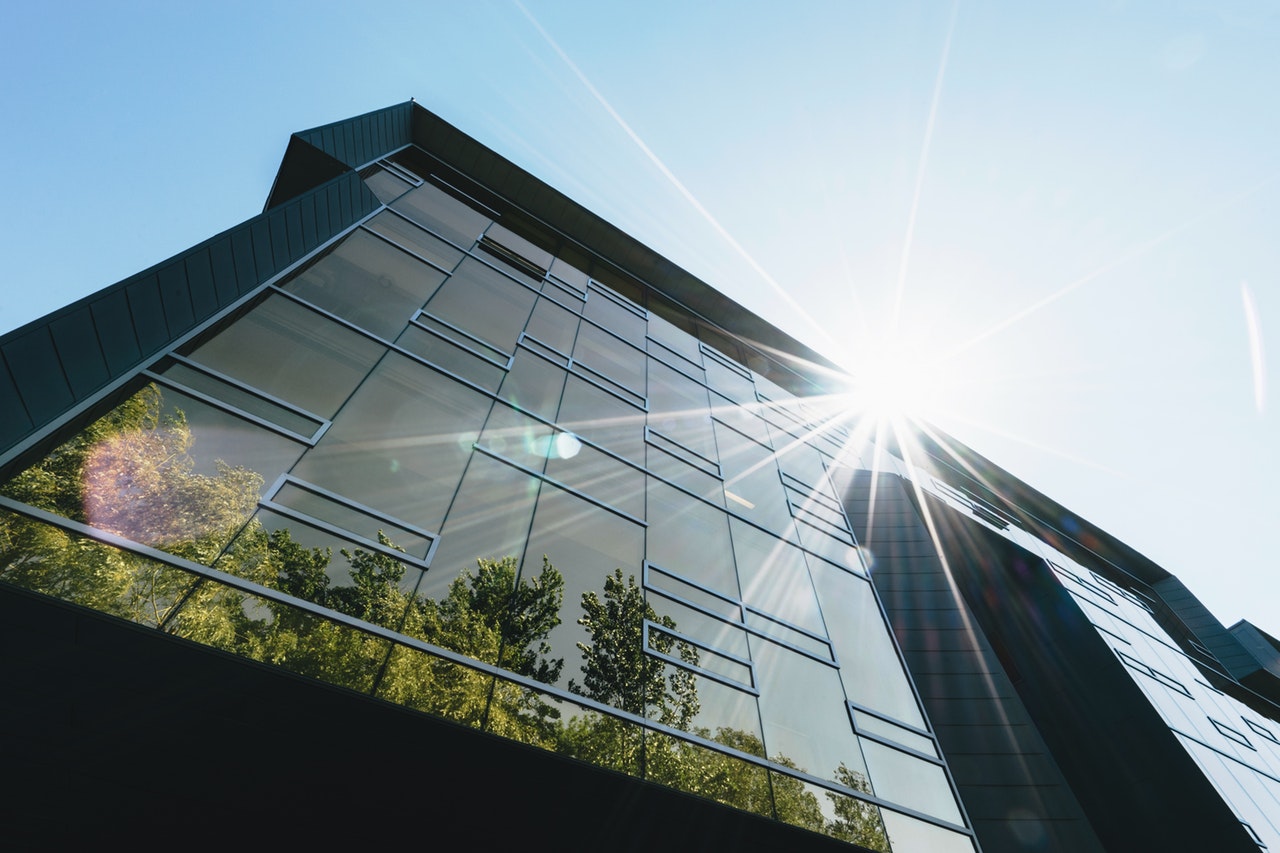While we often look to vehicles as a benchmark for emissions, they are hardly the only culprit in pollution. The buildings that form our city skylines and house our workplaces consume 20-50% of physical resources and continue to produce emissions long after their construction. In response, the green building movement has developed in order to fight climate change, create more sustainable communities, and further drive economic growth by minimizing long-term environmental impact.
Green buildings are designed, built, and operated in ways which reduce or eliminate environmental impact, including preserving natural resources and improving quality of life for those that live in and around them. Any building can be green, from skyscrapers to hospitals to single-family homes.
Green buildings typically adhere to the following criteria:
- Efficient use of resources like water and energy, and use of renewable energy like solar power
- Reducing waste and encouraging recycling, both in construction and maintenance
- Use of ethically and locally-sourced, non-toxic, and sustainable materials, i.e. wood, cork, or bamboo
- Consideration of quality of life for inhabitants and the surrounding area in design, construction, and operation
- Consideration of environmental change in design, i.e. seasonal changes, local ecosystem
There are diverse economic, environmental, and social benefits to increasing the adoption of green building practices, both at the local and global level. These include the health of building occupants, the reduction of resource waste, and an estimated $1.2 billion in energy savings in the U.S. between 2015 and 2018.
However, the true value of green buildings is in their long-term contribution to the global environment and economy. While many natural resources will never truly “run out”, increasing scarcity will cause their extraction to become unaffordable. As climate change continues to advance, the consequences of climate change become increasingly severe, and nearly 70 percent of the global population will live in cities (where the majority of green building efforts are focused) by 2050. For people the world over to live healthy and fulfilling lives supported by stable and sustainable economies, the way we treat our environment has to change—and the large-scale adoption of green building practices can make a large contribution to this cause, particularly in slowing the effects of climate change on cities around the world.
At CREED LA, part of our mission is to ensure that the construction industry in Los Angeles supports projects that positively impact the community and considers local and environmental impacts. That’s why we support green building initiatives in Los Angeles and beyond. To find out more about how CREED LA is committed to a better LA, visit us online or call (877) 810-7473 today.

